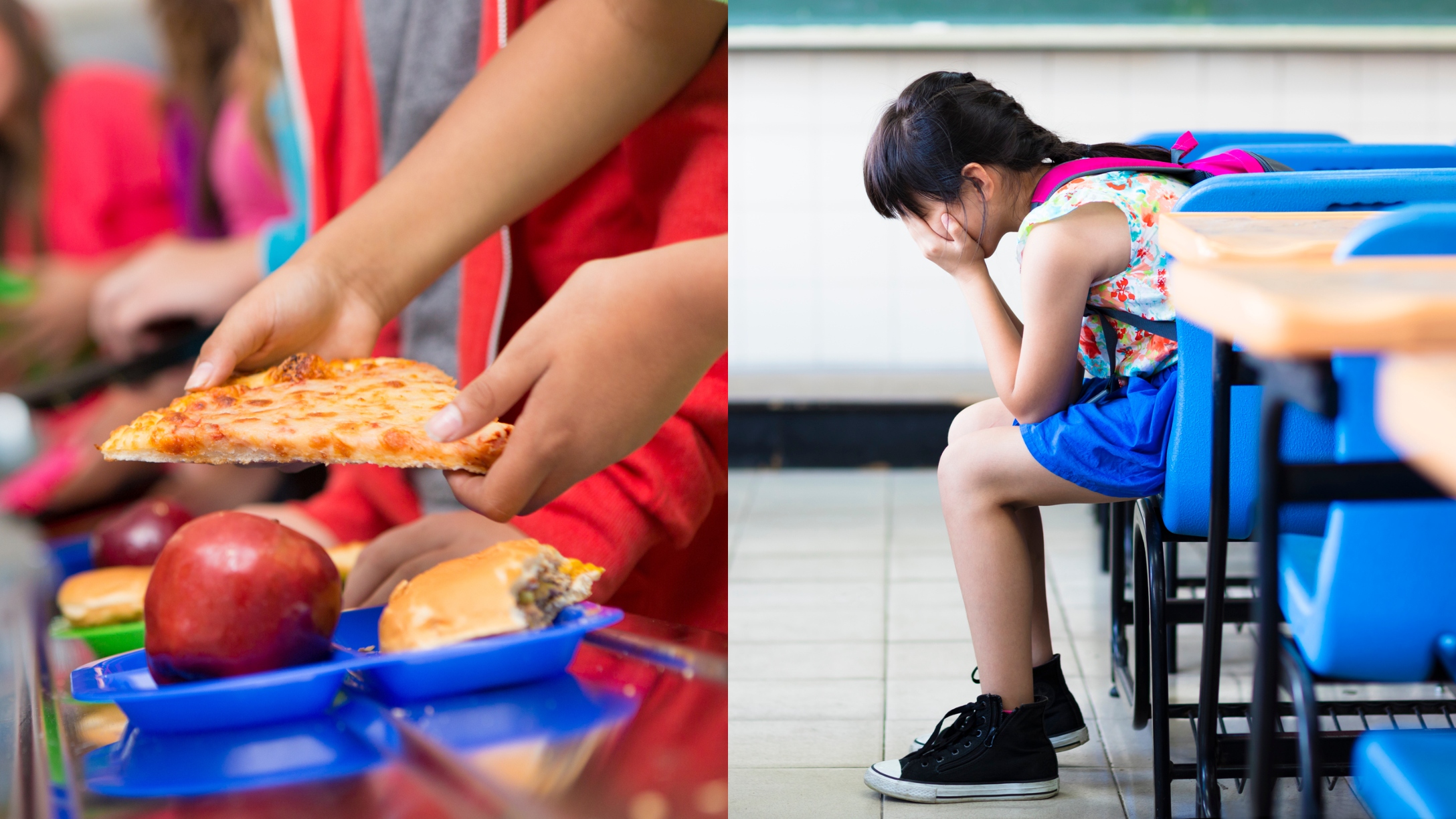
The surge of COVID-19 caused a worldwide pandemic beginning in March 2020. Although we are beginning to see some relief in the United States and returning to what we once thought was normal, there is a stark reality in our country that a lot has changed, and many Americans are struggling to keep up.
In 2021, the US Department of Agriculture announced it would sponsor a free breakfast and lunch program for all students during the 2021-2022 school year. This offered significant relief for families struggling to make ends meet during the pandemic-era financial crisis. Those programs have ended, and now US schoolchildren are hungry again because parents simply can't fill their pantries because food costs are at a long-time high thanks to inflation.
More From CafeMom: TikTok In Shock Over ‘Real’ German Ad Asking To Help Feed American Kids but It Has a Point
Inflation is killing Americans.
Anyone who has been to a grocery store in the last year has undoubtedly noticed a dramatic increase in food prices. The Associated Press reported that while food costs have increased, many families have seen a reduction in need-based benefits, including increased food stamps during the pandemic. The expanded benefits program ended in March, and it will affect nearly 30 million Americans, many of whom are children and will now be hungry.
Schools will still feed children, but debts will mount.
Most schools will not turn a hungry child away, but as unpaid food debts steadily increase, there is an evident continued need for food benefits for children. AP reported that many people are raising concerns about how the schools will continue to feed hungry children without the government helping to subsidize the exorbitant food costs.
Even though benefits are available to those with the most significant needs, applications that have not been necessary for several years are now required again.
"Programs that provide direct food assistance are hugely critical and we are going to see the effects of not having them over the next couple of months," Megan Curran, policy director for Columbia University's Center on Poverty and Social Policy, told AP.
More in-person classrooms mean more student meals.
At the beginning of the 2022-2023 school year, most students returned to traditional classrooms for their education. The influx of students in school buildings created a need for more cafeteria meals. Per AP, the dramatic increase in school meals jumped to pre-pandemic levels, according to a Food Research & Action Center report.
These meals are often consumed by students with food insecurities, representing nearly 9 million children in the US. The USDA reported that almost 34 million Americans struggle daily with food insecurity.
More From CafeMom: I Grew Up Hiding My Family's Struggle To Eat
With food insecurity comes trouble in the classroom.
Students who do not have access to consistent, nutritious food struggle in the classroom. This equates to difficulties concentrating on school work when they feel hunger pains. AP spoke with fourth grader Fabien Aguirre, who agreed it is sometimes hard to think.
"It's hard to focus in class when I'm hungry. Food helps me pay attention to what I'm learning," said Aguirre, 10.
He is fed breakfast and lunch at VH Lassen Academy of Science and Nutrition in the Roosevelt School District in Phoenix. All students at the school are eligible for free meals. The school recently changed how it distributes breakfast to help those embarrassed about getting free meals. Instead of having breakfast in the cafeteria, staff bring it to the school entrances.
"We realized that a lot of our students were going straight to the playground and not going into the cafeteria to eat before school, from the 7 a.m. to 7:15 a.m. timeframe," said Jessica Padilla, a sixth grade math and science teacher, per AP.
Now that free meals aren't available to all students, teachers are feeling the pain.
Families were left scrambling when federal free meal programs ended, National PTA President Anna King told AP. She explained that the parents didn't know where to go or what paperwork to complete. It created a confusing and frustrating situation for many families.
Teachers struggle with students who are hungry and unable to perform in the classroom. Martissa Moore, a teacher at Bainbridge Middle School in Bainbridge, Georgia, told the story of a struggling student in her classroom. He didn't pay attention and often started trouble with other students. She began to bring him the same breakfast she made her daughter and saw an improvement in his academic performance.
"You just do what you have to do for your students because you don't want them hungry," Moore told AP.




